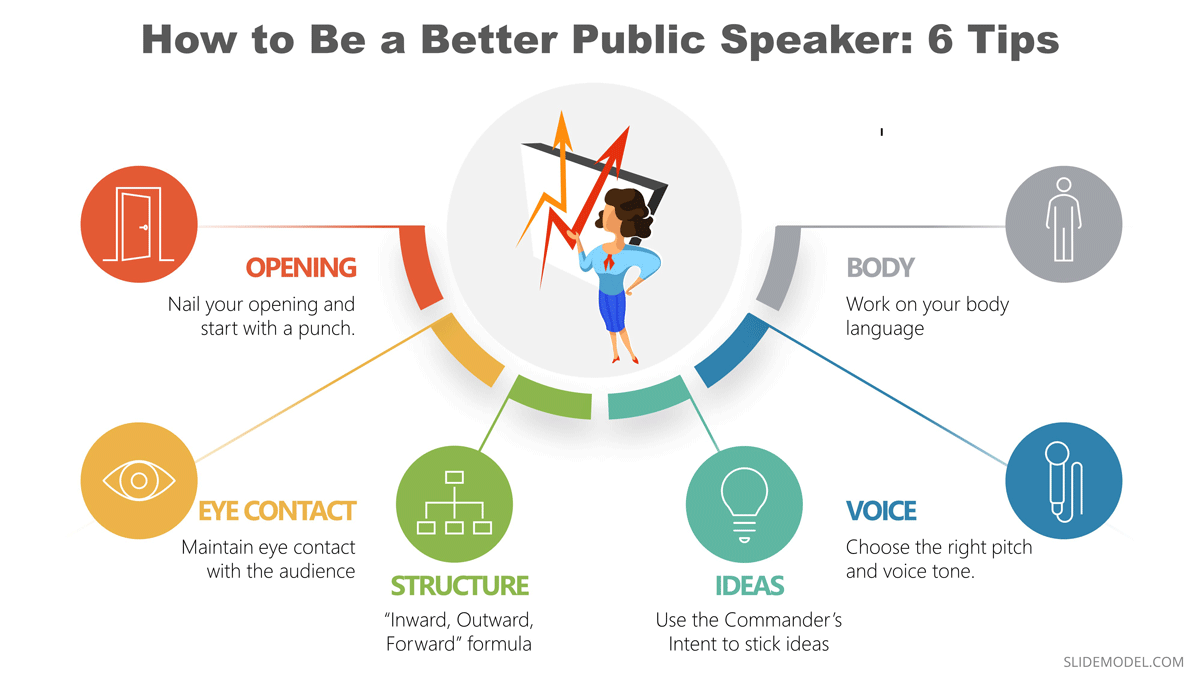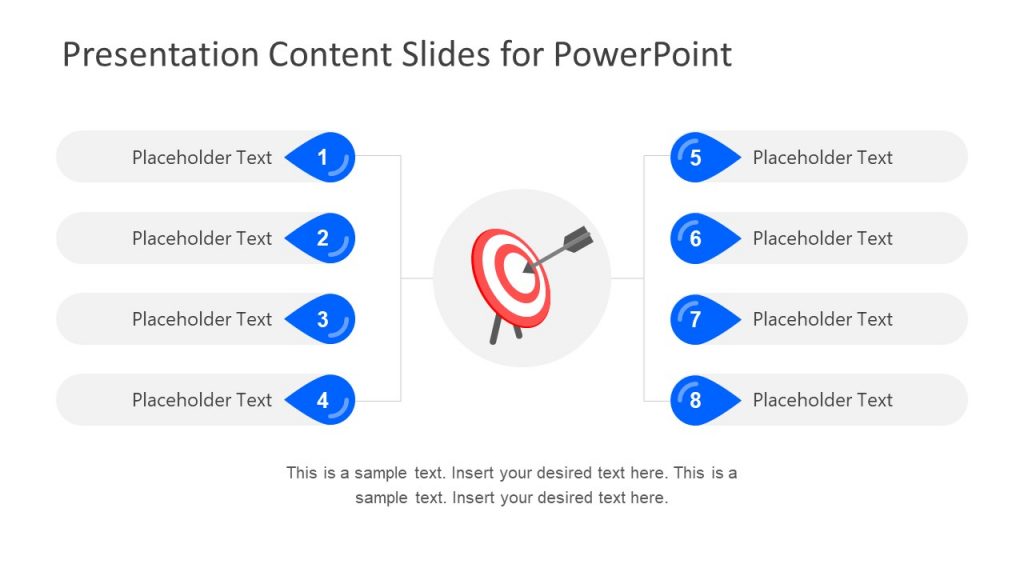
As the popular lore tells: you can talk your way into success. Indeed, great public speakers often hold top corporate positions, lead the nations, and rally others to take joint action. But what if talking isn’t your forte, especially when it comes to doing so in front of large audiences? In that case, you’ll benefit a lot from the public speaking tips and tricks we showcase in this post!
What is Public Speaking?
In the simplest terms, public speaking is the art of effective oral communication with one person or many. We talk to the public anytime we engage in a discussion with someone else.
Everyone knows how to communicate with others and do so in front of bigger groups e.g. at work. Far fewer, feel confident with delivering persuasive speeches or doing public presentations at conferences, virtual events, or even in the boardroom full of important stakeholders.
But we also know how great public speakers look and act. They are confident and inspiring, can “plant” ideas into other’s heads, and inspire action.
The Benefits of Public Speaking
Being a great public speaker gives you several major advantages in personal and professional areas:
- Higher level of verbal and nonverbal communication skills
- Better critical thinking and analysis abilities
- Leeway into leadership positions
- Personal brand development
- More productive networking
Ultimately, being good at public speaking helps you get more comfortable in group settings and draw the spotlight towards yourself. Talented public speakers can connect better with new people through charismatic presentations and persuasive talks. This, in turn, opens up an array of new opportunities — be it making more friends or raising funds for your project.
Different Types of Public Speaking
As mentioned already, public speaking refers both to our day-day two-way exchanges with others and public presentations to an audience.
In the case of the latter, public speeches can be classified as:
Extemporaneous speeches
Pre-written speeches and practiced ahead of time. Usually, a speaker will rely on aids such as notes, presentation slides, or an outline when delivering the speech.
Example: Conference talks.
Impromptu speeches
Spur of the moment speeches, delivered without any preparation, agenda, or notes. Since you are caught off guard, delivering such a speech can be pretty challenging unless you are already good at speaking in public.
Example: being asked to speak up during a customer meeting.
Manuscript speeches
Word-by-word delivery of a pre-written script, usually displayed on a screen/teleprompter. In essence, you are reading your speech rather than presenting it.
Example: Officials addressing the nation.
Memorized speeches
You deliver a prepared speech from memory without any aids. Such speaking can feel gut-wrenching if you are afraid to forget your lines and don’t feel confident improvising. Careful preparation is needed. Example: Ted talks or live product presentations.

The Fear of Public Speaking
Despite the fact that most of us love chatting, far fewer feel comfortable talking in front of larger audiences. In fact, 75% of Americans have some level of public speaking anxiety. Many also feel frantic about going on the stage.
The fear of public speaking is called glossophobia. It’s a recognized psychological condition with symptoms such as:
- Sweating
- Accelerated heart rate
- Shaking
- Dizziness and lightheadedness
- Nausea
So what makes us terrified of public speaking?
Physiologists say that the above reactions are our body’s natural response to threatening situations. Our nervous system enters a hyperarousal state, activating the sense of fear. This sabotages our performance on stage.
But what prompts us to treat public speaking as a threatening situation? Researchers found that humans perceive prolonged eye watching as an existential threat. Back in the old days, observations from a hostile tribe were a strong sign of upcoming trouble. So did a watchful eye of a predatory animal.
This “memory” still remains imprinted subconsciously in our brain today. Thus, when we go on stage to deliver a public speech, our brain first registers the gazing audience as a threat. The brain goes into the “fight or flee” mode, prompting a reaction similar to the one we experience when facing actual danger. Most public speaking tips are aimed at helping us cope with this reaction and develop a more relaxed response to being observed.
Also, some of us tend to get extra jittery before public speaking due to anxiety sensitivity — the fear of fear. Apart from being scared of public speaking as an act, some of us also feel stressed about how their anxiety will interfere with performing well. This leads to a cascading effect of paralysis.
But as Dalel Carnegie wrote in the “Art of Public Speaking, 13th Edition”: “If you believe you will fail, there is no hope for you. You will.”
A strong mindset is the key to taming your fear of public speaking. If regular calming exercises don’t help, try attending public speaking classes or taking individual coaching sessions. An experienced mentor can help you learn to cope with anxiety, hone your public speaking skills, and develop better confidence in front of groups.

How to Be a Better Public Speaker: 6 Tips
Confidence is also crucial. Whenever we are uncertain of our abilities to do good, we feel uncomfortable. So practice public talks, and practice a lot. In the words of Dale Carnegie,
“Practice in speaking before an audience will tend to remove all fear of audiences, just as practice in swimming will lead to confidence and facility in the water. You must learn to speak by speaking.”
So, how to be a great presenter and improve your public speaking skills? Below are six research-backed public speaking techniques you should employ the next time you are preparing to deliver a speech!
1. Nail Your Opening
The presenter’s anxiety is at highest during the first 30-60 seconds of the speaking. Once you get past that, you’ll hail more confidently through the rest of your speech.
Hence, make sure to get a positive response from your audience from the get-go. Here are some ideas for starting a public speech:
- Begin with the ending: use BLUF technique — bottom line upfront
- Share a personal story to build empathy
- Ask a rhetorical question to make the audience think
- Provide a quote that sets the tone for your narrative
- Project into the future to get the audience focused on outcomes
- Use some humor to squeeze out some laughs and relax yourself
Read more about how to start a presentation and which slides to use.
2. Maintain Eye Contact with the Audience
Simon Sinek, the most-viewed presenter on TED, offers this piece of advice:
“Look at specific audience members throughout your speech. If you can, give each person that you intently look at an entire sentence or thought, without breaking your gaze. When you finish a sentence, move on to another person and keep connecting with individual people until you’re done speaking.”
By maintaining such gradual eye contact, you can build a better rapport with all audience members. Then again, it prevents your thoughts from getting scattered if you leave your gaze scanning over everyone. Also, by focusing on one person at a time, you deliberately ignore the stares from others. This helps minimize the anxiety-inducing “fight or flee” reflex.
3. Try the “Inward, Outward, Forward” Formula For Your Speech
The Inward, Outward, Forward format of structuring your speech is a good way to make a strong point within a short time span. It helps the listeners retain your core message and align with your way of thinking. Here’s how it works:
- Explain why you are bringing up the topic.
- Provide evidence on what others think about it.
- End with a solution to the stated problem.
For example, if you are doing an after-action review meeting with your team, you can first summarize the main challenge you’ve faced. Then present examples of how individuals or other teams are handling similar issues. Lastly, sum up your proposal on the follow-up steps and solutions you’d recommend trying.
4. Use the “Commander’s Intent” Technique to Make Your Ideas Stick
Commander’s Intent (CI) is a technique the military personnel uses to communicate the main directive.
A CI is a brief statement, placed on top of every order, summarizing the plan’s goal and desired end results. You can apply the same tactic to highlight the main points from each section of your speech. Or to prepare accompanying slides for the presentation.
Add a CI statement to the most important slides. Then expand on the idea within your speech. Doing so will help the audience focus on the key discussion point and retain the information better.
5. Choose the Right Pitch and Tone of Voice
Researchers from Yale University found that a speaker’s tone of voice and pitch influences the listeners’ perception of the speaker in terms of trust and likability. Why so?
Because voice is the most effective means for conveying emotions. It’s more channeling to disguise your attitude when you talk. So if you sound unconfident, anxious, doubting, or bored, the audience will likely sense that and act accordingly.
For that reason, many amazing public speakers undergo voice coaching. They train to project the right emotions via their voice and naturally adjust pitch and vocal tone to convey different ideas. Most strive to achieve the maximum resonance point — a resonance that infers power to your voice.
For example, if your range is 2 octaves and 4 notes respectively, this is your max resonance point. Talking at this level most of the time is optimal.
When you need to show passion, go a note higher. Go a note or two lower if you want to project certainty or authority.
When you need to show passion, go a note higher. Go a note or two lower if you want to project certainty or authority.

Final Public Speaking Tip: Work on Your Body Language
When presenting in person, your body language will also be telling of your confidence and authority. Plus, it will shape the audience’s perception of you, just like your voice.
Hence, be sure to practice your posture and gestures too! In particular:
Don’t self-block (aka trying to shrink your body).
This means crossing arms, slouching, keeping hands in the pocket, etc. Such movements act as a barricade between you and the audience. They make you appear less trustworthy. To avoid them, hold on to the microphone or a presentation clicker.
Practice breathing and hand gestures.
Uneven, raspy breathing will affect your pitch and tone of voice. So practice taking slow, measured breaths to pace your speech better. Take longer pauses when you want to emphasize a point. Also, use mild hand gestures, head nods, and arm movements to engage with the audience. But don’t gesticulate too much as this will appear distractive.
Ultimately, there are no shortcuts. Practice, practice, and then practice some more! Great public speakers aren’t born — they are self-made!



